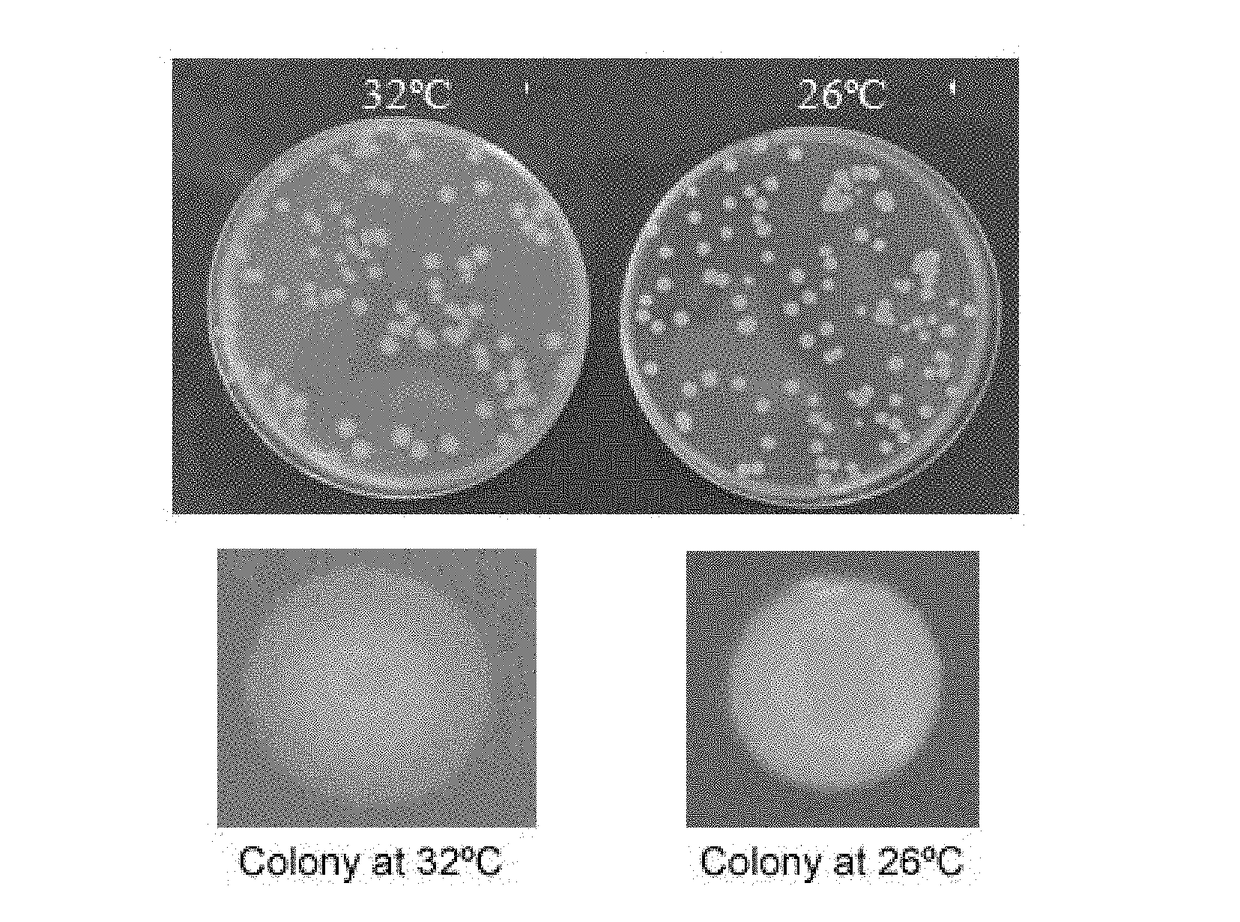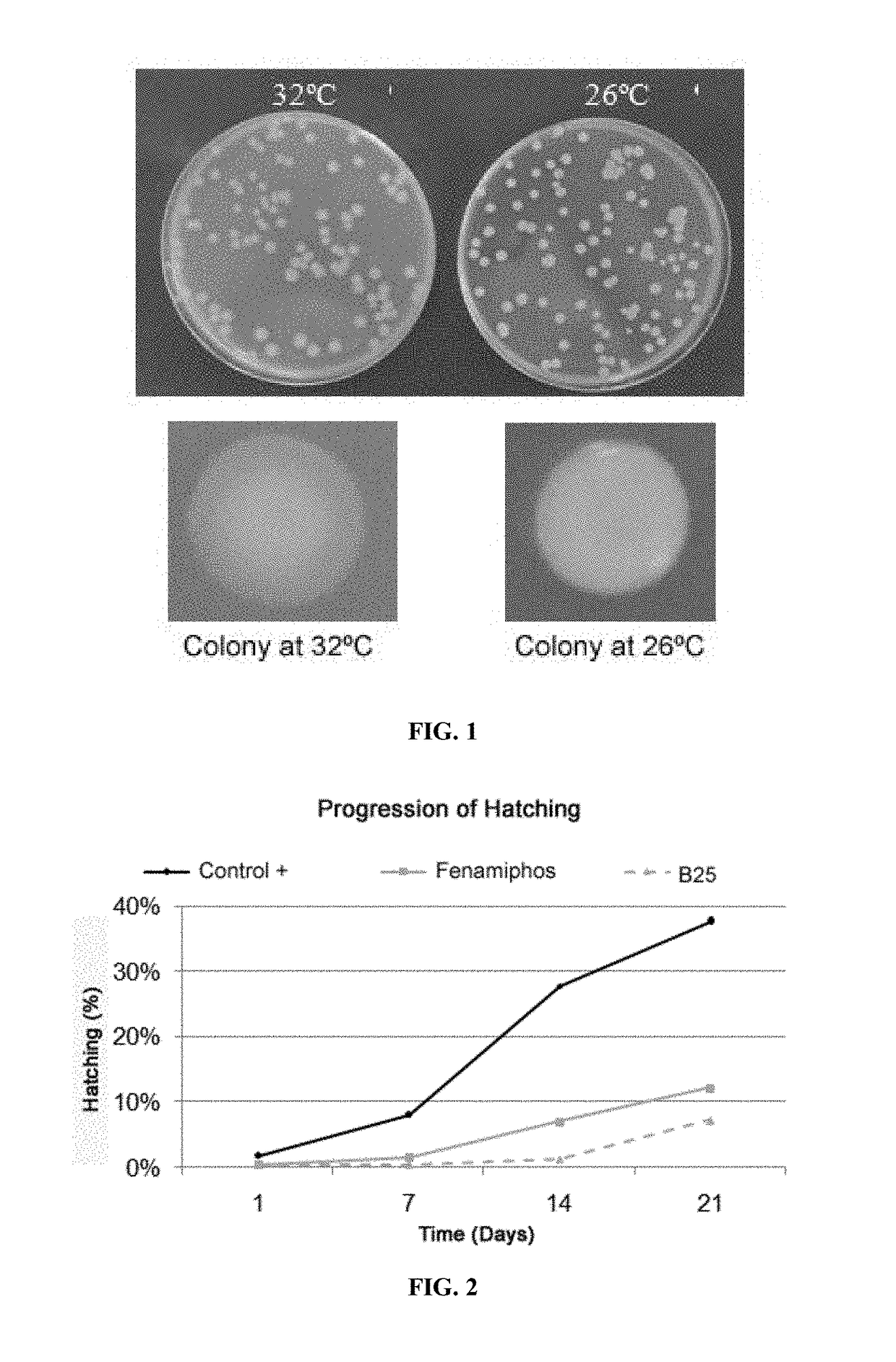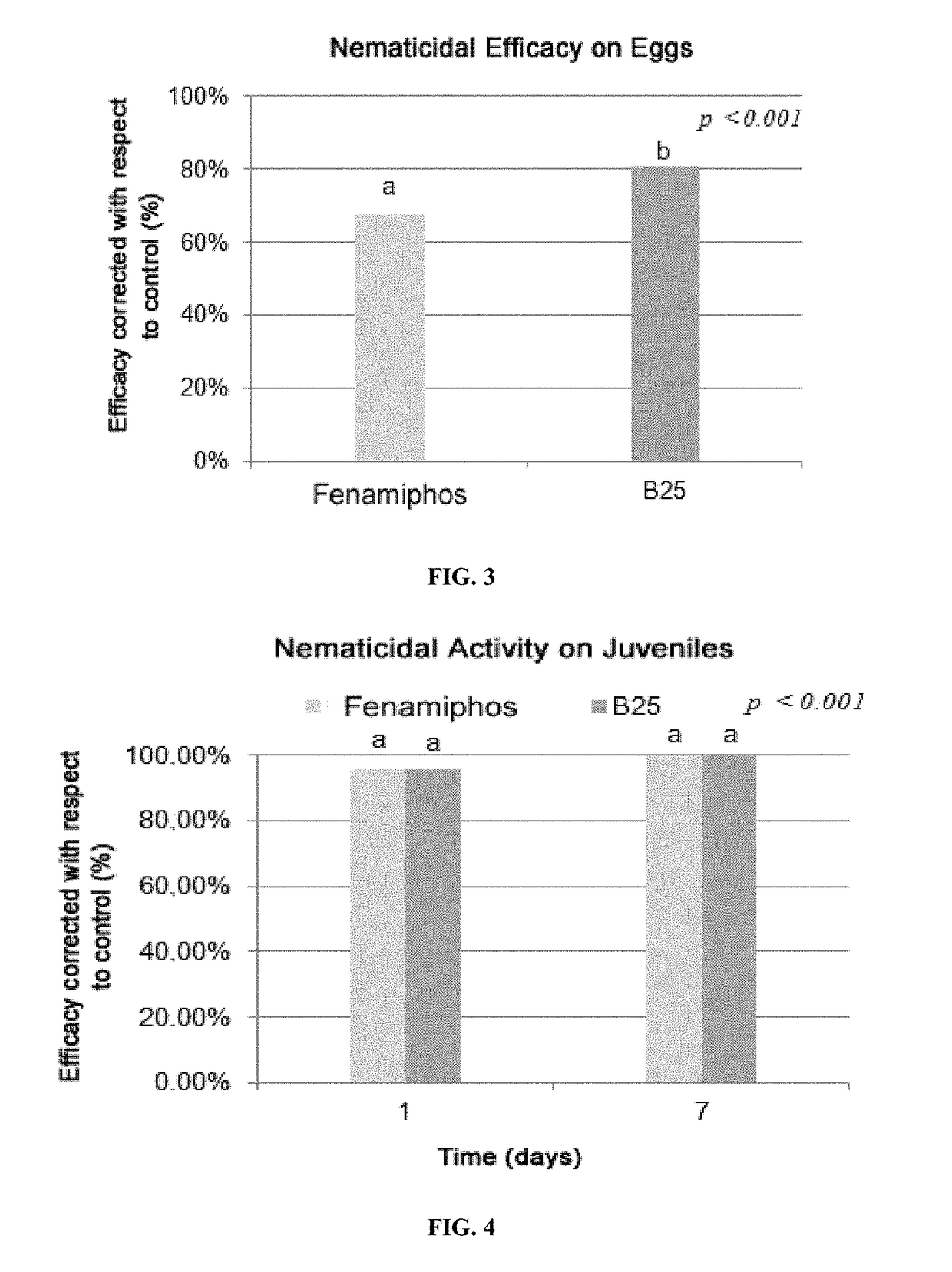Bacteria with nematicidal activity and the ability to promote plant growth
a technology of nematicidal activity and bacteria, applied in the field of biological control of nematodes, can solve the problems wrinkling and deformation of stems and leaves, and difficult to measure their real impact on crop yield and make a large-scale estimate, etc., to achieve the effect of preventing plant infection
- Summary
- Abstract
- Description
- Claims
- Application Information
AI Technical Summary
Benefits of technology
Problems solved by technology
Method used
Image
Examples
example 1
[0230]Production and Characterization of Lysobacter enzymogenes Strain MR B25
Production
[0231]Lysobacter enzymogenes strain MR B25 was isolated from a pepper plant harvested from / coming from a field managed according to ecological agriculture practices located in Gavá, Barcelona, in September 2011.
[0232]For isolation, the roots were disinfected on the surface by immersion in a 5% sodium hypochlorite solution for 5 minutes and 3 subsequent washings in sterile distilled water. Disinfection was verified by seeding in Petri dishes with Potato Dextrose Agar culture medium (PDA: potato extract, 4 g / L; dextrose, 20 g / L; agar 15 g / L) and nutritive agar (NA: meat extract, 1 g / L, yeast extract 2 g / L, soy peptone 5 g / L, sodium chloride 5 g / L and agar 15 g / L). Once disinfected, they were subjected to mechanical disruption in phosphate buffer by means of a previously sterilized mortar. The resulting solution was filtered through a Kitasato flask to remove root fragments. Then serial dilutions fro...
example 2
[0238]In Vitro Nematicidal Activity of Lysobacter enzymogenes Strain MR B25 Against Meloidogyne javanica Eggs
Materials and Methods
Assay on Eggs
[0239]The in vitro nematicidal ability of bacterium L. enzymogenes strain MR B25 on M. javanica eggs was evaluated in hatching chambers (Nunclon™ Surface multiwell plates, Nunc, Denmark) in which 2 g of previously sterilized soil had been added. The substrate was then inoculated with an aqueous suspension containing 350 M. javanica eggs. The biological control agent L. enzymogenes strain MR B25 was applied at 1×1010 CFU / mL.
[0240]The hatching chamber was incubated at 26° C. for 3 weeks and periodic readings were taken 24 hours after applying the biological control agent and 1, 2 and 3 weeks later to determine the hatching percentage. Eight repetitions of each treatment, a negative control with a reference chemical at the commercially recommended dose (0.0125% Nemacur®; active ingredient: fenamiphos) and a control with sterile distilled water t...
example 3
[0245]In Vitro Nematicidal Activity of Lysobacter enzymogenes Strain MR B25 Against Meloidogyne javanica Juveniles
Materials and Methods
[0246]The nematicidal ability of bacterium L. enzymogenes strain MR B25 was evaluated in vitro against M. javanica eggs in hatching chambers (Nunclon™ Surface multiwell plates, Nunc, Denmark), in which 2 g of previously sterilized soil were added. An aqueous suspension containing 200 juvenile forms of M. javanica was then added, and the biological control agent, L. enzymogenes strain MR B25, was applied at 1×1010 CFU / mL (1E+10 CFU / mL). The hatching chamber was incubated at 26° C. for 7 days and counts were performed by means of the Hawksley® chamber after 24 hours (1 day) and after 7 days to determine the number of live juveniles (% mortality). A control with sterile distilled water and another control with a reference chemical (Nemacur® 0.0125%: active ingredient=fenamiphos) were included. Eight repetitions of each treatment were performed.
Results a...
PUM
| Property | Measurement | Unit |
|---|---|---|
| temperatures | aaaaa | aaaaa |
| aerial fresh weight | aaaaa | aaaaa |
| aerial dry weight | aaaaa | aaaaa |
Abstract
Description
Claims
Application Information
 Login to View More
Login to View More - R&D
- Intellectual Property
- Life Sciences
- Materials
- Tech Scout
- Unparalleled Data Quality
- Higher Quality Content
- 60% Fewer Hallucinations
Browse by: Latest US Patents, China's latest patents, Technical Efficacy Thesaurus, Application Domain, Technology Topic, Popular Technical Reports.
© 2025 PatSnap. All rights reserved.Legal|Privacy policy|Modern Slavery Act Transparency Statement|Sitemap|About US| Contact US: help@patsnap.com



